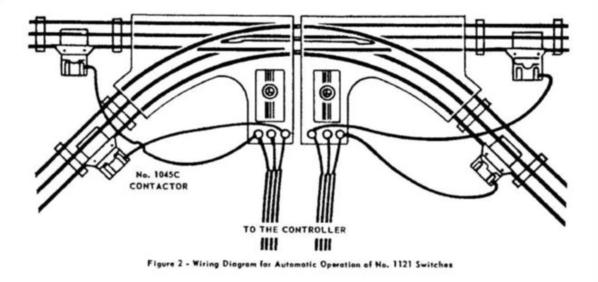The 1121 switches are not non-derailing, so you don't need fiber pins in the inner adjacent rails of the turnout side as with non-derailing switches. The main use for fiber pins with these switches is to isolate a block from another connected block of track. Say, with a siding coming a mainline you want to switch on/off separately from the mainline but using the same transformer.
I don't think your problem is due to missing fiber pins.
I now use O22 switches, which are for O Gauge track. From the time I was a child until about 20 years ago (I'm now 66), I had 027 track and switches. My recollection in that 1121 switches are for 027 layouts.
Also, my recollection is that 1121 switches are non-derailing provided the fiber pins are correctly positioned and the switches are otherwise in good working order. A knowledgeable technician can almost always repair or tune these switches to get them in good working order.
Incidentally, I much prefer 022 switches and O Gauge track over 1121 switches and 027 track. O Gauge is stronger and sturdier track and less likely to warp than 027 track. O22 switches have power plugs to power them independently from the track power, and I find the lights and lanterns of the 022 switches to be more attractive than those in the 1121 switches.
There are technicians that can change the 1121 switches so they are independently powered, so they operate more like 022 switches, which would greatly improve their performance IMHO.
20 years ago I bought many used 022 switches, most of which did not work well, paid a few bucks (maybe $50) to have a technician repair and tune them, and they have been terrific on my layout since then. I believe you can still get used 022 switches cheap because so many hobbyists have converted to Fastrack, Atlas, Gargraves, etc.










